While housing supply and affordability dominate public debate, the prevalence of safe, accessible spaces for children and adolescents is a critical yet overlooked issue. Nora Redmond takes a closer look at whether the built environment is leaving young people underserved

The covid-19 pandemic revealed a troubling truth about the UKŌĆÖs built environment: it often seems to be failing the youngest in society. While public discourse often focuses on housing supply and affordability, less attention is given to how new developments cater to children and adolescents. The lack of access to safe, recreational spaces ŌĆō crucial for mental and physical well-being ŌĆō remains a major oversight within many developments.
Only 6% of new homes in the UK are designed by architects, according to the RIBA, a fact that the institute believes is reflected in the poor design of many developments, which often fail to provide access to green space and areas for play. Research suggests that these shortcomings disproportionately affect young people, particularly in lower-income areas, and highlight the urgent need for solutions. This growing realisation led to the creation of a recent parliamentary inquiry.
In February, informed MPs on the House of Commons housing, communities and local government select committee that the relative absence of design professionals in the housing development process is harming young people.
Developments that sideline young people
Although young people need space to exercise and stay fit, and outdoor space is known to be critical to achieving this, children and adolescents have increasingly been excluded and sidelined within communities and on our streets, as witnesses to the committee pointed out.

Jo McCafferty, director of Levitt Bernstein, told the committee: ŌĆ£Having worked in housing for the last 25 years, I can count on this hand the number of times I have been asked about the experience of children at a pre-app meeting or a design review panel for the design I am putting forward.ŌĆØ
I can count on this hand the number of times I have been asked about the experience of children at a pre-app meeting
Jo McCafferty, Levitt Bernstein
As a result, young people are missing out on vital recreational spaces ŌĆō both parks and ŌĆśdoorstep playable spaces,ŌĆÖ which are designated landscaped areas with play features for children under five near their homes.
The problem is particularly acute in lower-income areas. The that the most affluent 20% of wards in England have five times more parks or green spaces per person than the most deprived 10% of wards. Notably, this data excludes private gardens, which are often not included in affordable and social housing.
: nearly twice as many low-income respondents reported difficulty or an inability to access private or shared gardens compared with high-income respondents. Age also played a notable role. Almost a fifth of 18 to 27-year-olds struggled to access a garden, compared with less than half that number among 58 to 67-year-olds.
Lockdowns revealed inequities in urban space
My own experiences of the pandemic, spent in Ireland, highlighted the extent of these challenges. Close to where I lived during the lockdowns, in north inner-city Dublin, the passageway from the local flat complex to the nearest park was closed for weeks. While the green space itself remained open, the entrance next to the apartment block, which housed many young families, was restricted, whereas the opening next to terraced houses with gardens remained unaffected. The irony was clear: the young people who needed the outdoor space the most were the ones who had their access restricted.
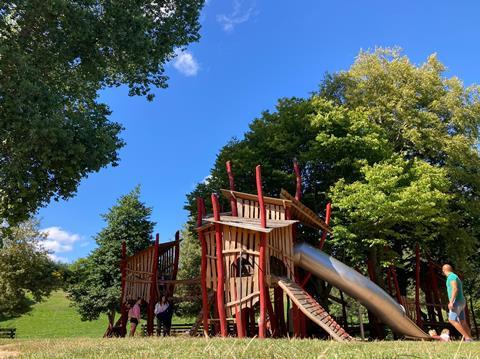
The covid-19 lockdowns in the UK and Ireland underscored the limited access to outdoor space for lower-income households, which are not only more densely packed but also have fewer green areas. In 2021, high-rise purpose-built flats represented just 3% of total housing stock, but these dwellings are far more common in the social housing sector.
Tim Gill, a global advocate for childrenŌĆÖs play and mobility and author of , tells ║├╔½Ž╚╔·TV Design that the pandemic has had a long-term effect on how much time children and teenagers spend outdoors. He believes the pandemic accelerated a trend already developing over the past decade or two: children and young people are missing out on unsupervised, free play in their neighbourhoods. This is a crucial time when children typically learn important skills such as conflict resolution and peer relationship building.
ŌĆ£ItŌĆÖs likely that the children hardest hit by the pandemic are those already living in difficult circumstances,ŌĆØ says Gill, referring to young people without access to their own gardens or nearby green space.
ŌĆ£They didnŌĆÖt have a room of their own, their families were perhaps worried about finances, and also the fear of illness,ŌĆØ he adds.
Gill acknowledges that the pandemic was challenging for everyone, but in the long run, ŌĆ£the ones that will struggle the most are the ones who were hit hardest and, right now, have the least wherewithal to deal with whatŌĆÖs happened.ŌĆØ
According to Gill, the pandemic has exacerbated an existing issue: ŌĆ£We now have a generation of young people growing up where a significant proportion are really struggling.ŌĆØ While he attributes rising mental health issues among young people to multiple factors, he identified the lack of recreational space as a key contributor.
The importance of play
Alice Ferguson, co-founder of , shared similar concerns. ŌĆ£We started Playing Out as a group of parents who felt that our children ŌĆō and children in general ŌĆō were missing out on something vital for their happiness, health, and development: the ability to play outside with other children, on their doorsteps, in real life.ŌĆØ

Playing Out is a resident-led campaign that began in Bristol in 2009 and has since spread across the UK. It advocates for the creation of ŌĆ£play streets,ŌĆØ where residents temporarily close their streets to traffic, allowing children to play freely and safely outdoors. This model aims to support childrenŌĆÖs health, happiness, and sense of belonging.
We felt that children were missing out on something vital for their happiness, health, and development
Alice Ferguson, Playing Out
Ferguson observes that children are increasingly losing space to play outside, with streets becoming more ŌĆ£car dominatedŌĆØ. She argues that the problem stems from both national and local decisions related to traffic and housing ŌĆō decisions that often fail to consider childrenŌĆÖs needs.
This loss of shared public space is particularly harmful to young people in socially deprived urban areas, where there are fewer gardens and well-maintained play areas within walking distance.
ŌĆ£If youŌĆÖve got a back garden and your parents have money and a car to take you to a park or the woods, it doesnŌĆÖt matter as much that you canŌĆÖt play on your street or walk to the local park,ŌĆØ Ferguson explains. ŌĆ£But if you donŌĆÖt have those things, youŌĆÖve kind of lost everything.ŌĆØ
She also reveals that Playing Out is frequently contacted by parents, usually in social, council, or managed housing, who receive letters forbidding their children from playing outside. Some have even been threatened with eviction if their children continue to do so, with play often being confused with anti-social behaviour.
Ferguson describes this as a ŌĆ£constant issue.ŌĆØ
ŌĆ£WeŌĆÖve seen letters saying, ŌĆśAnti-social behaviour is becoming a problem on the estate. Children are scooting up and down corridors, and drugs are being dealt by the binsŌĆÖ - as if these things are somehow equivalent,ŌĆØ she says.
Challenging the ŌĆśNo Ball GamesŌĆÖ mentality
Based on Playing OutŌĆÖs experience of supporting tenants, Ferguson notes that in some cases it is the housing providers themselves who prevent young people from spending time outside. A major concern is the widespread use of ŌĆśNo Ball GamesŌĆÖ signs around housing estates, which send a clear message to children that they are not welcome to play in the spaces just outside their homes.

However, Ferguson highlights a shift in attitude among some larger housing associations, which are now working towards policies that support childrenŌĆÖs right to play on their doorsteps. She cites the removal of ŌĆśNo Ball GamesŌĆÖ signs as a positive first step.
ŌĆ£ThatŌĆÖs a really positive thing thatŌĆÖs actually happening ŌĆō to give children back access to even a small amount of space, or perhaps not very good space, but at least trying to return access to that space on their doorstep,ŌĆØ Ferguson argues.
The inability to access recreational space, whether green areas or doorsteps, likely contributes to a significant disparity in the mental and physical health of young people from disadvantaged areas compared with their middle- to higher-income counterparts. , children in densely populated and deprived areas are three times more likely to be obese. At the same time, mental health charity Mind found that are almost five times more likely to experience severe mental health problems than those in the highest income bracket.
Making space for young people
In response to these challenges, residential developer Mount Anvil partnered with the London Lions basketball team last July to create a series of free-to-use basketball courts in several estate regeneration schemes across London. The partnership followed a study by the Lions, which found that urban spaces lack room for young people. Their study revealed that 46% of respondents felt that having free space to engage in physical exercise was their most important mental health aid. An additional 16% reported that, without such outlets, they might have engaged in anti-social behaviour or crime during their upbringing.
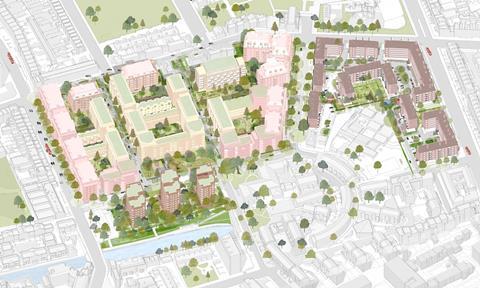
The first step in the partnership is part of Mount AnvilŌĆÖs redevelopment of the Barnsbury Estate in Islington. A basketball court on the estate will be co-designed by a group of 15 to 20 young people, aged around 8 to 16, from the local community, along with graffiti artist Stazzy, who grew up on the estate.
We can make [co-design processes] sound scary, onerous, and complicated - but it doesnŌĆÖt have to be that way
Tom Beardmore, Mount Anvil
Tom Beardmore, social value and communications director at Mount Anvil, tells ║├╔½Ž╚╔·TV Design that thereŌĆÖs a ŌĆ£natural sweet spotŌĆØ in the development industry. ŌĆ£The 40- and 50-plus age group are naturally very involved in the planning and consultation process,ŌĆØ he says. However, Beardmore notes that at the last few traditional pop-up events he attended, he could count the number of under-18s on one hand.
As a result, he sought to prioritise the involvement of young people in the design and planning stages of the Barnsbury Estate project.
ŌĆ£We can make [co-design processes] sound scary, onerous, and complicated - but it doesnŌĆÖt have to be that way,ŌĆØ Beardmore explains. For him, the key is ŌĆ£making it relevant, making it fun, and finding ways in which young people want to get engaged, rather than how we [the developer] or the council want to.ŌĆØ
Rethinking urban spaces by listening to young voices
Dinah Bornat, director and co-founder of ZCD Architects and former mayorŌĆÖs design advocate for the Mayor of London, explains to ║├╔½Ž╚╔·TV Design that to better adapt urban spaces for young people, it is essential to talk directly to them and understand their needs - through methods like a play space audit, for example.
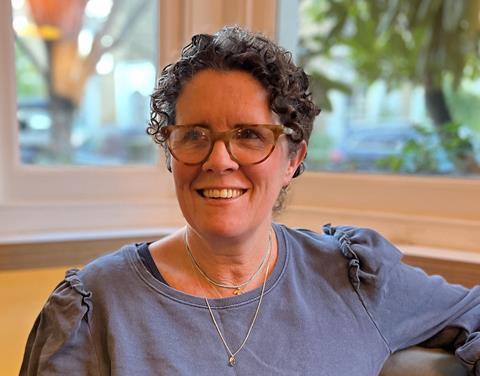
Bornat emphasises that the design process for new developments involving young people should be play-oriented. It should involve ŌĆ£good dialogue, adults in the room listening, children talking to other adults in their community, and people being willing to listen.ŌĆØ She believes that consultation with young people must go beyond simply asking them to choose play equipment.
ItŌĆÖs still not a fair and equitable system if the space isnŌĆÖt close by
Dinah Bornat, ZCD Architects
ŌĆ£If weŌĆÖre going to change the power structures a little bit, if weŌĆÖre going to live in really, really high-density cities ŌĆō as that just seems to be what weŌĆÖre doing ŌĆō then we need to seriously consider how we maintain and manage these spaces,ŌĆØ Bornat says.
While the elements that go into areas where young people play and congregate are important ŌĆō particularly to accommodate different needs, such as disabilities ŌĆō Bornat argues that the location of these spaces is equally, if not more, critical.
ŌĆ£You can talk a lot about a single green space, but if itŌĆÖs not on your doorstep ŌĆō and by that, I literally mean on your doorstep, down the road ŌĆō then itŌĆÖs going to be quite a challenge for you to reach,ŌĆØ she explains.
ŌĆ£It wonŌĆÖt meet peopleŌĆÖs needs if itŌĆÖs nowhere near where they live,ŌĆØ Bornat adds. ŌĆ£ItŌĆÖs still not a fair and equitable system if the space isnŌĆÖt close by.ŌĆØ
Looking to the future
The challenges around access to outdoor space and play point to a broader issue within the built environment: the needs of younger generations, particularly those from disadvantaged backgrounds, are often overlooked. As initiatives like Playing Out and community co-design projects show, there is growing recognition that the planning and design of urban spaces can have a significant impact on the wellbeing of children and adolescents.
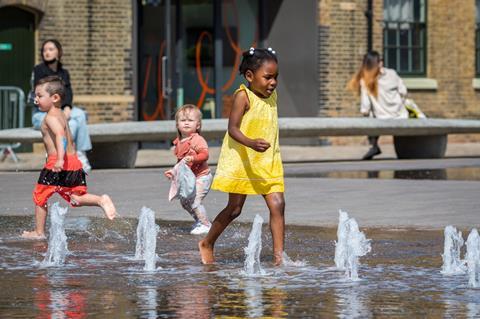
The pandemic has highlighted these disparities, particularly in terms of access to recreational spaces, and has accelerated conversations around how to address them. By focusing on creating inclusive and accessible environments, it is possible to design developments that better serve not only young people but entire communities.
An approach that considers the perspectives and needs of all age groups ŌĆō from children to older generations ŌĆō can help create spaces that foster stronger connections and support healthier lifestyles. As the Boomers to Zoomers campaign continues to explore, approaching the design of our built environment from an intergenerational perspective offers an opportunity to rethink how we plan and develop our towns and cities in ways that benefit everyone.
Boomers to Zoomers: Designing for the Generations
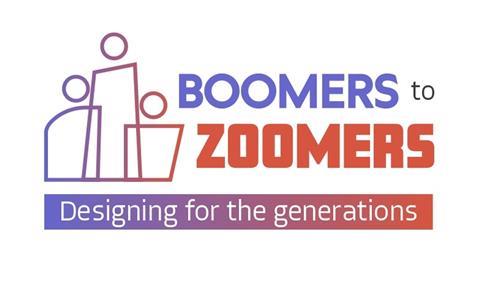
║├╔½Ž╚╔·TVŌĆÖs sister publication ║├╔½Ž╚╔·TV Design has launched a campaign focused on different intergenerational design needs.
Boomers to Zoomers will in the coming months look at the underlying challenges we face in designing for different generations. It aims to highlight the need for architectural solutions that cater to all age groups.
The campaign will focus on a range of topics including designing for children and young people, intergenerational living and new models for housing, workplace issues, later-living and education and skills.
Email us at ben.flatman@bdonline.co.uk or use the hashtag #boomerstozoomers
BDŌĆÖs campaign is being guided by an editorial panel, drawing on expert advisers from across architecture, planning and urban design.
The editorial panel includes:
- Dinah Bornat, founding co-director of ZCD Architects
- Alex Ely, founding director of Mae Architects
- Darryl Chen, partner at Hawkins Brown
- Satish Jassal, founding director of Satish Jassal Architects
- Kathy MacEwen, independent planning consultant and former head of planning and enabling at CABE
- Anna Mansfield, director at Publica
- Setareh Neshati, head of development at Westminster City Council
- Sarah Robinson, associate director at The KingŌĆÖs Foundation
- Peter Sofoluke, director at BPTW architects
Click to find out more.
























No comments yet